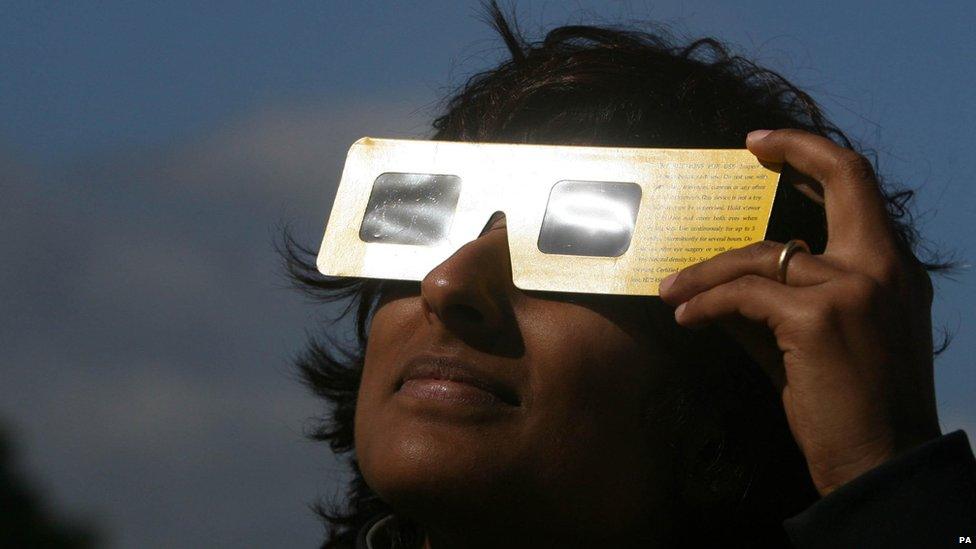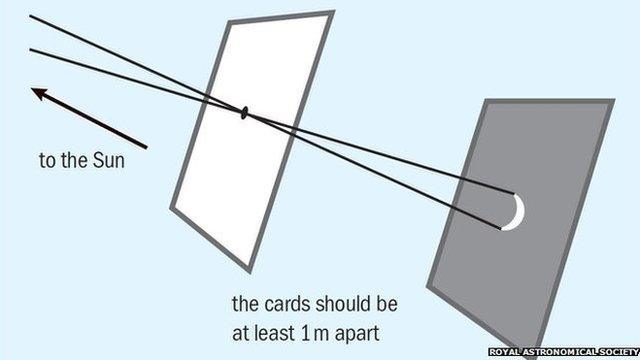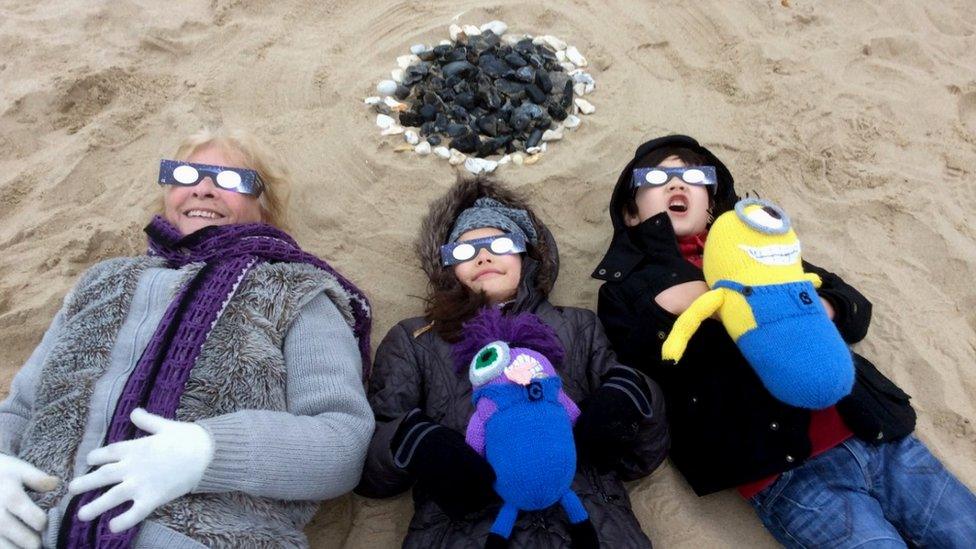Solar Eclipse 2015: How to watch a solar eclipse safely
- Published
Will you be able to see the solar eclipse?
What is a solar eclipse?
A solar eclipse occurs when the Moon's orbit lines up in between the Sun and the Earth.
The Moon blocks out the Sun's light for a short time, casting a shadow on the Earth.
It's a rare event and only possible when the Moon is at exactly the right distance from the Earth.
How to watch the solar eclipse safely
Get Involved: How will you watch the eclipse?
BBC News explains Friday's celestial event and how you can observe it safely - in 90 seconds.
When can I see an eclipse in the UK?
On Friday 20 March the UK will experience the first eclipse of 2015.
It will be a partial eclipse, so the sky will darken but the Sun will still peek out from behind the Moon.

People living in the north of the UK will see more of the Sun covered
8.45am - the eclipse will begin in the UK
9.31am - the Moon will be nearest the middle of the Sun
10.41am - daylight is restored and the eclipse is over
Selfie warning!
"In 1999, when there was the last major eclipse, no-one really had smartphones or took selfies," said Daniel Hardiman-McCartney, an eye expert from the College of Optometrists.
"This could potentially be very dangerous because people might be tempted to look at the Sun as they try to get the perfect shot or clip."
Safety first...
Never look directly at the Sun: you can damage your eyes forever.
Even the small amount of Sun peeking out from behind the Moon during an eclipse is enough to make you go blind.
Never look at the Sun through binoculars or a telescope.
Don't look directly at the Sun through sunglasses, or exposed photographic film - they will not protect your eyes.
How can I safely watch the eclipse?

Special eclipse viewing specs provide a safe way to watch the eclipse...

...but the safest option is to watch the eclipse broadcast on live TV.
How to make a pinhole camera
Another way to safely enjoy the eclipse is to make a pinhole camera. This will project an image of the eclipse onto card.
You'll need two pieces of card. Make a small hole in the centre one of them - no more than 4mm across.
Tilt the card with the hole towards the Sun and use it to project an image of the eclipse onto the other card.

Pinhole cameras should only be used with your back to the Sun
When is the next eclipse in the UK?
The next big partial eclipse in the UK will be in August 2026.
The UK hasn't seen a total solar eclipse - where the Moon completely covers the Sun - since 1999, and won't get another one until 2090.
- Published20 March 2015

- Published18 March 2015

